(2,14,16), (3,21,24), (8, 56,64), (5, 35, 41) The set that does NOT belong to the group is:
(5, 35, 41)
(2,14, 16)
(3,21,24)
(8, 56,64)
To determine which set does not belong to the group, we need to analyze the relationships between the numbers in each set.
1. Identify the sets:
- Set 1: (2, 14, 16)
- Set 2: (3, 21, 24)
- Set 3: (8, 56, 64)
- Set 4: (5, 35, 41)
2. Analyze Set 1 (2, 14, 16):
- The first number is 2.
- The second number, 14, is a multiple of 2 (2 × 7 = 14).
- The third number, 16, is also a multiple of 2 (2 × 8 = 16).
- Conclusion: All numbers are multiples of 2.
3. Analyze Set 2 (3, 21, 24):
- The first number is 3.
- The second number, 21, is a multiple of 3 (3 × 7 = 21).
- The third number, 24, is also a multiple of 3 (3 × 8 = 24).
- Conclusion: All numbers are multiples of 3.
4. Analyze Set 3 (8, 56, 64):
- The first number is 8.
- The second number, 56, is a multiple of 8 (8 × 7 = 56).
- The third number, 64, is also a multiple of 8 (8 × 8 = 64).
- Conclusion: All numbers are multiples of 8.
5. Analyze Set 4 (5, 35, 41):
- The first number is 5.
- The second number, 35, is a multiple of 5 (5 × 7 = 35).
- The third number, 41, is NOT a multiple of 5 (5 × 8 = 40, and 5 × 9 = 45).
- Conclusion: 5 and 35 are multiples of 5, but 41 is not.
6. Final Conclusion:
- The set that does not belong to the group is (5, 35, 41) because while the first two numbers are multiples of 5, the third number is not.
Answer: The set that does NOT belong to the group is (5, 35, 41).
---
- Set 1: (2, 14, 16)
- Set 2: (3, 21, 24)
- Set 3: (8, 56, 64)
- Set 4: (5, 35, 41)
- The first number is 2.
- The second number, 14, is a multiple of 2 (2 × 7 = 14).
- The third number, 16, is also a multiple of 2 (2 × 8 = 16).
- Conclusion: All numbers are multiples of 2.
- The first number is 3.
- The second number, 21, is a multiple of 3 (3 × 7 = 21).
- The third number, 24, is also a multiple of 3 (3 × 8 = 24).
- Conclusion: All numbers are multiples of 3.
- The first number is 8.
- The second number, 56, is a multiple of 8 (8 × 7 = 56).
- The third number, 64, is also a multiple of 8 (8 × 8 = 64).
- Conclusion: All numbers are multiples of 8.
- The first number is 5.
- The second number, 35, is a multiple of 5 (5 × 7 = 35).
- The third number, 41, is NOT a multiple of 5 (5 × 8 = 40, and 5 × 9 = 45).
- Conclusion: 5 and 35 are multiples of 5, but 41 is not.
- The set that does not belong to the group is (5, 35, 41) because while the first two numbers are multiples of 5, the third number is not.
Similar Questions
For teaching the concept of probability, Mrs. Verma decided to use two dice. Shet took a pair of die and write all the possible outcomes on the blackboard. All possible outcomes wave:
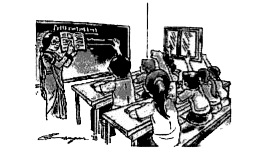
(1,1), (1,2), (1,3), (1,4), (1,5), (1,6)
(2,1), (2,2), (2,3), (2,4), (2,5), (2,6)
(3,1), (3,2), (3,3), (3,4), (3,5), (3,6)
(4,1), (4,2), (4,3), (4,4), (4,5), (4,6)
(5,1), (5,2), (5,3), (5,4), (5,5), (5,6)
(6,1), (6,2), (6,3), (6,4), (6,5), (6,6)
The probability that 6 will come up on both dice isView SolutionFor teaching the concept of probability, Mrs. Verma decided to use two dice. Shet took a pair of die and write all the possible outcomes on the blackboard. All possible outcomes wave:
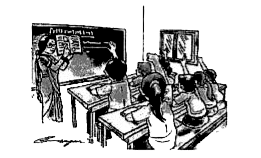
(1,1), (1,2), (1,3), (1,4), (1,5), (1,6)
(2,1), (2,2), (2,3), (2,4), (2,5), (2,6)
(3,1), (3,2), (3,3), (3,4), (3,5), (3,6)
(4,1), (4,2), (4,3), (4,4), (4,5), (4,6)
(5,1), (5,2), (5,3), (5,4), (5,5), (5,6)
(6,1), (6,2), (6,3), (6,4), (6,5), (6,6)
The probability that 5 will come up at least once is:View Solution
Knowledge Check
- Question 1 - Select One
10,14,16,18,21 ,24,26
A26B24C21D18 - Question 2 - Select One
Find the one that does not belong to the group
1, 8, 27, 64, 127,216A216B64C27D127 - Question 3 - Select One
Find the one that does not belong to the group
8, 27, 125, 343, 1331A8B343C1331Dnone of these
For teaching the concept of probability, Mrs. Verma decided to use two dice. Shet took a pair of die and write all the possible outcomes on the blackboard. All possible outcomes wave:
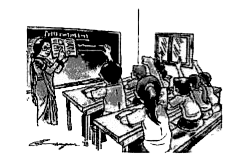
(1,1), (1,2), (1,3), (1,4), (1,5), (1,6)
(2,1), (2,2), (2,3), (2,4), (2,5), (2,6)
(3,1), (3,2), (3,3), (3,4), (3,5), (3,6)
(4,1), (4,2), (4,3), (4,4), (4,5), (4,6)
(5,1), (5,2), (5,3), (5,4), (5,5), (5,6)
(6,1), (6,2), (6,3), (6,4), (6,5), (6,6)
The probability that 4 will not come up on either of them isView SolutionFor teaching the concept of probability, Mrs. Verma decided to use two dice. Shet took a pair of die and write all the possible outcomes on the blackboard. All possible outcomes wave:
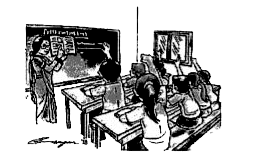
(1,1), (1,2), (1,3), (1,4), (1,5), (1,6)
(2,1), (2,2), (2,3), (2,4), (2,5), (2,6)
(3,1), (3,2), (3,3), (3,4), (3,5), (3,6)
(4,1), (4,2), (4,3), (4,4), (4,5), (4,6)
(5,1), (5,2), (5,3), (5,4), (5,5), (5,6)
(6,1), (6,2), (6,3), (6,4), (6,5), (6,6)
The probability that both numbers comes up are even, isView SolutionFor teaching the concept of probability, Mrs. Verma decided to use two dice. Shet took a pair of die and write all the possible outcomes on the blackboard. All possible outcomes wave:
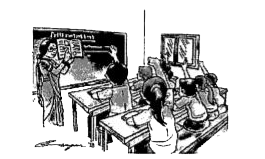
(1,1), (1,2), (1,3), (1,4), (1,5), (1,6)
(2,1), (2,2), (2,3), (2,4), (2,5), (2,6)
(3,1), (3,2), (3,3), (3,4), (3,5), (3,6)
(4,1), (4,2), (4,3), (4,4), (4,5), (4,6)
(5,1), (5,2), (5,3), (5,4), (5,5), (5,6)
(6,1), (6,2), (6,3), (6,4), (6,5), (6,6)
The probabiliyt that both numbers comes up are prime numbers, isView Solution214212832128354?35?
View SolutionQuestion Stimulus :-
The following set of coordinates represent relations between X and Y. The one set which does not belong to this group is .....View Solution

